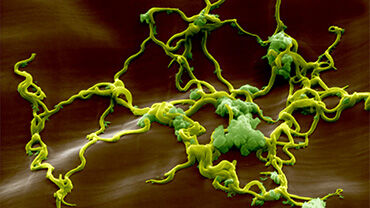Climatic Factors Driving Invasion of the Tiger Mosquito (Aedes albopictus) into New Areas of Trentino, Northern ItalyArchived
The tiger mosquito (Aedes albopictus), vector of several emerging diseases, is expanding into more northerly latitudes as well as into higher altitudes in northern Italy. Changes in the pattern of distribution of the tiger mosquito may affect the potential spread of infectious diseases transmitted by this species in Europe.
Climatic Factors Driving Invasion of the Tiger Mosquito (Aedes albopictus) into New Areas of Trentino, Northern ItalyRoiz D1,2, Neteler M1, Castellani C1, Arnoldi D1, Rizzoli A1. 1. Department of Biodiversity and Molecular Ecology, Fondazione Edmund Mach, Research and Innovation Centre, S. 2. Michele all' Adige, Italy Wetland Ecology Department, Doñana Biological Station (CSIC), Seville, Spain, PLoS One 2011 Apr 15; 6(4):e14800.
Background: The tiger mosquito (Aedes albopictus), vector of several emerging diseases, is expanding into more northerly latitudes as well as into higher altitudes in northern Italy. Changes in the pattern of distribution of the tiger mosquito may affect the potential spread of infectious diseases transmitted by this species in Europe. Therefore, predicting suitable areas of future establishment and spread is essential for planning early prevention and control strategies.
Methodology/Principal findings: To identify the areas currently most suitable for the occurrence of the tiger mosquito in the Province of Trento, we combined field entomological observations with analyses of satellite temperature data (MODIS Land Surface Temperature: LST) and human population data. We determine threshold conditions for the survival of overwintering eggs and for adult survival using both January mean temperatures and annual mean temperatures. We show that the 0°C LST threshold for January mean temperatures and the 11°C threshold for annual mean temperatures provide the best predictors for identifying the areas that could potentially support populations of this mosquito. In fact, human population density and distance to human settlements appear to be less important variables affecting mosquito distribution in this area. Finally, we evaluated the future establishment and spread of this species in relation to predicted climate warming by considering the A2 scenario for 2050 statistically downscaled at regional level in which winter and annual temperatures increase by 1.5 and 1°C, respectively.
Conclusions/significance: MODIS satellite LST data are useful for accurately predicting potential areas of tiger mosquito distribution and for revealing the range limits of this species in mountainous areas, predictions which could be extended to an European scale. We show that the observed trend of increasing temperatures due to climate change could facilitate further invasion of Ae. albopictus into new areas.
Arthropod Vector Surveillance network (VBORNET) comment: Roiz et al. made a very interesting study examining climatic factors driving the establishment and spread of Aedes albopictus in a mountainous region of Northern Italy. Its major strength is the use of recently collected field observations, whereas many similar studies are using data from Asian populations of this species, apart from the work published in ‘Development of Aedes albopictus risk maps’ (ECDC Technical Report, 2009). The latter study covered whole Europe whereas Roiz et al. propose a first study at regional level. Based on this example, similar studies should be done in other areas which will help to improve surveillance of introduction and establishment of this invasive mosquito species. Additionally it can guide preparedness for control and for early prevention of mosquito-borne disease transmission. For this last issue, abundance should be modelled as well. Finally, the study demonstrates the importance of collecting field entomological data, which is even more significant considering the possible adaptation of the mosquito to European climate and future climate changes.





